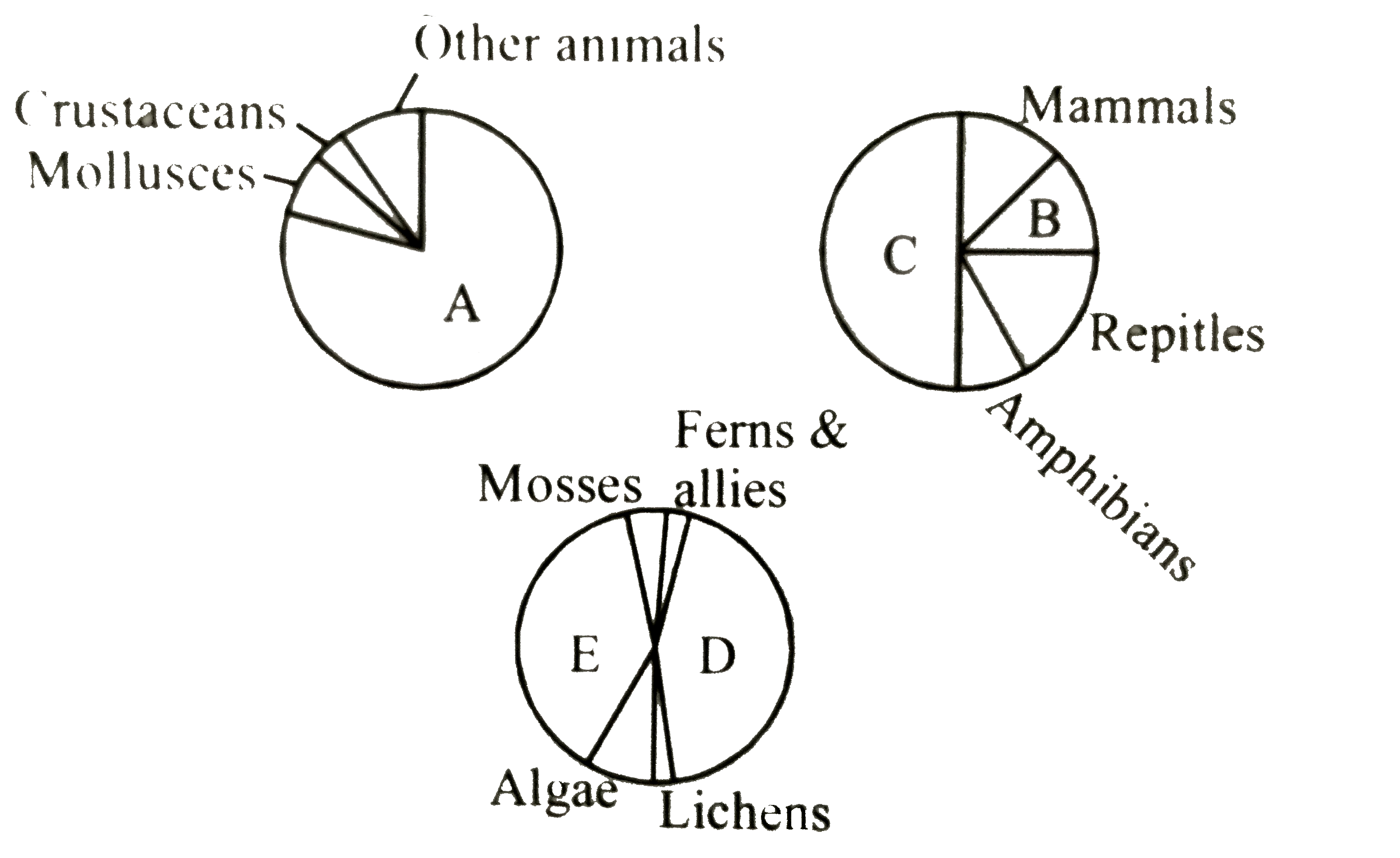Name the types of blastula present in following animals:
(i) Amphioxus (ii) Reptiles birds and prototherian mammals
(iii) Insects (iv) Annelids ,Molluscs
To answer the question regarding the types of blastula present in various animals, we will categorize the animals mentioned and identify the type of blastula associated with each group.
1. Identify the type of blastula in Amphioxus:
- Amphioxus is known to have a coeloblastula. This type of blastula has a blastocoel (the fluid-filled cavity) surrounded by a single layer of blastoderm cells.
2. Identify the type of blastula in Reptiles, Birds, and Prototherian Mammals:
- Reptiles, birds, and prototherian mammals exhibit a discoblastula. In this type, the blastoderm forms a disc shape on top of the yolk, which is characteristic of these groups.
3. Identify the type of blastula in Insects:
- Insects possess a periblastula. This type of blastula is characterized by superficial cleavage, where the blastoderm forms a layer around the yolk.
4. Identify the type of blastula in Annelids and Molluscs:
- Annelids and molluscs also have a coeloblastula. However, unlike Amphioxus, in these organisms, the blastocoel is surrounded by multiple layers of blastoderm cells.
Summary of Blastula Types:
- (i) Amphioxus: Coeloblastula
- (ii) Reptiles, Birds, and Prototherian Mammals: Discoblastula
- (iii) Insects: Periblastula
- (iv) Annelids and Molluscs: Coeloblastula (with multiple layers of blastoderm)
- Amphioxus is known to have a coeloblastula. This type of blastula has a blastocoel (the fluid-filled cavity) surrounded by a single layer of blastoderm cells.
- Reptiles, birds, and prototherian mammals exhibit a discoblastula. In this type, the blastoderm forms a disc shape on top of the yolk, which is characteristic of these groups.
- Insects possess a periblastula. This type of blastula is characterized by superficial cleavage, where the blastoderm forms a layer around the yolk.
- Annelids and molluscs also have a coeloblastula. However, unlike Amphioxus, in these organisms, the blastocoel is surrounded by multiple layers of blastoderm cells.
- (i) Amphioxus: Coeloblastula
- (ii) Reptiles, Birds, and Prototherian Mammals: Discoblastula
- (iii) Insects: Periblastula
- (iv) Annelids and Molluscs: Coeloblastula (with multiple layers of blastoderm)
Topper's Solved these Questions
- HUMAN REPRODUCTION BOOK - PRADEEPCHAPTER - HUMAN REPRODUCTION EXERCISE - ADDITIONAL QUESTIONS (LONG ANSWER QUESTIONS)
70 Videos
- HUMAN REPRODUCTION BOOK - PRADEEPCHAPTER - HUMAN REPRODUCTION EXERCISE - ANALYTICAL QUESTIONS WITH ANSWERS
19 Videos
- HUMAN REPRODUCTION BOOK - PRADEEPCHAPTER - HUMAN REPRODUCTION EXERCISE - ADDITIONAL QUESTIONS ( VERY SHORT ANSWER QUESTIONS)
40 Videos
- EXCRETORY PRODUCTS AND THEIR ELIMINATIONBOOK - PRADEEPCHAPTER - EXCRETORY PRODUCTS AND THEIR ELIMINATIONEXERCISE - Curiosity Questions
7 Videos
- LOCOMOTION AND MOVEMENTSBOOK - PRADEEPCHAPTER - LOCOMOTION AND MOVEMENTSEXERCISE - NOTABLE QUESTIONS
2 Videos
Similar Questions
Knowledge Check
Which among the following have scales?
(i) Amphibians (ii) Pisces
(iii) Reptiles (iv) MammalsA(i) and (iii)B(iii) and (iv)C(ii) and (iii)D(i) and (ii)Which among the following have scales?
(i) Amphibians (ii) Pisces
(iii) Reptiles (iv) MammalsA(i) and (iii)B(iii) and (iv)C(ii) and (iii)D(i) and (ii)Select the correct option that represents examples of the following types of animals.
(i) Cold blooded animal
(ii) Warm blooded animal
(iii) Animal possessing dry and cornified skin
(iv) Hermaphrodite animal.A(i) (ii) (iii) (iv)Forg Pigeon Wall lizard EarthwormB(i) (ii) (iii) (iv)Pigeon Frog Crocodile HydraC(i) (ii) (iii) (iv)Rabbit Fish Frog EarthwormD(i) (ii) (iii) (iv)Fish Frog wall lizard Starfish
Select the correct option that represents examples of the following types of animals.
(i) Roundworm
(ii) Fish possessing poison string
(iii) A limbless amphibian
(iv) An oviparous mammal
View SolutionName the metal present in: (i) Chlorophyll
(ii) Haemoglobin
(iii) Vit. B-12
(iv) cis platin
View SolutionName the excretory product of (i) reptiles (ii) Prawns (iii) Tapeworm (iv) Marine fish (v) Insects (vi) Birds.
View SolutionName those parts of a flower which serve the same function as the following do in animals :
(i) Testis (ii) Ovary (iii) Eggs (iv) Sperms.
View Solution
Study the above pie charts and match the following
(i) Angiosperms (ii) Fishes
(iii) Birds (iv) Fungus
(v) Insects
View Solution
